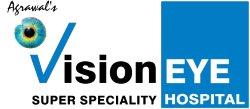
OUR APPROACH
With the increase in incidence of diabetes and increase in life expectancy, the risk of retinal disorders such as diabetic retinopathy and age related macular degeneration has gone up. We continuously make efforts to create awareness in patients suffering from diseases such as diabetes, heart conditions, high blood pressure, etc. who are more susceptible to be affected by retinal disorders. In some cases, the damage caused to the eye is irreversible. Therefore, we also conduct regular family screening clinics, diabetes screening clinics etc. so that we can identify retina disorders before they grow to a vision threatening stage.
OUR PROCESS
The patient’s eye is dilated and examined using advanced diagnostic technologies such as OCT, angiography, fundus photography, retinal imaging and ultra sound. A photographic documentation of the retina helps to keep a track of the improvement in the eye.
LASER INDIRECT OPHTHALMOSCOPY (LIO)
This procedure involves using laser through binocular indirect ophthalmoscope for retinal photocoagulation. It is often used for patients with diabetic retinopathy, venous occlusions, peripheral retinal holes and lattice degenerations.
INTRAVITREAL INJECTIONS
Drugs such as Lucentis, Avastin, Ozurdex and others are injected in the eye to prevent further loss of vision after the pupil is dilated and numbed with anesthesia. These can often help in halting progression or reversing the disease pathology in diabetic retinopathy, vein occlusions or age related macular degeneration.
Glaucoma Family Clinic at Vision Eye Hospital
Glaucoma is often an inherited disorder and adverse effects on vision can be prevented by screening and detecting individuals at higher risk. If one of your family members has glaucoma, you need to get yourself screened by a glaucoma expert.
VITREO RETINAL SURGERY: MINIMALLY INVASIVE VITRECTOMY SURGERY (MIVS)
Vitrectomy is done to repair or prevent retinal detachment, especially when it threatens to affect the macula. We have the most advanced vitrectomy machine and the expertise to deal with complex retinal problems.
FUNDUS ANGIOGRAPHY
A small amount of yellow fluorescein dye is injected which travels to the eye, where it highlights the blood vessels. It is particularly useful in showing leaking blood vessels and highlighting where the blood supply at the back of the eye is poor. After this, photographs of the eye are taken.
RETINAL ULTRASTRUCTURE EXAMINATION (HIGH DEFINITION, SPECTRAL DOMAIN OCT)
This examination allows the doctor to understand the problems of patient’s retina, which might often not be identified using other optical techniques.
ULTRASOUND EXAMINATION OF RETINA
While optical techniques can reveal much about the structure of the retina, ultrasound allows imaging of the choroid and deeper tissues.
OUR SKILLS & TALENTS
The team of doctors is skilled to treat all the retinal disorders from retinal detachment to diabetic retinopathies. They are keen researchers and have published papers in many leading national and international ophthalmic journals.

FAQS
[faq cat_id=”13″]
